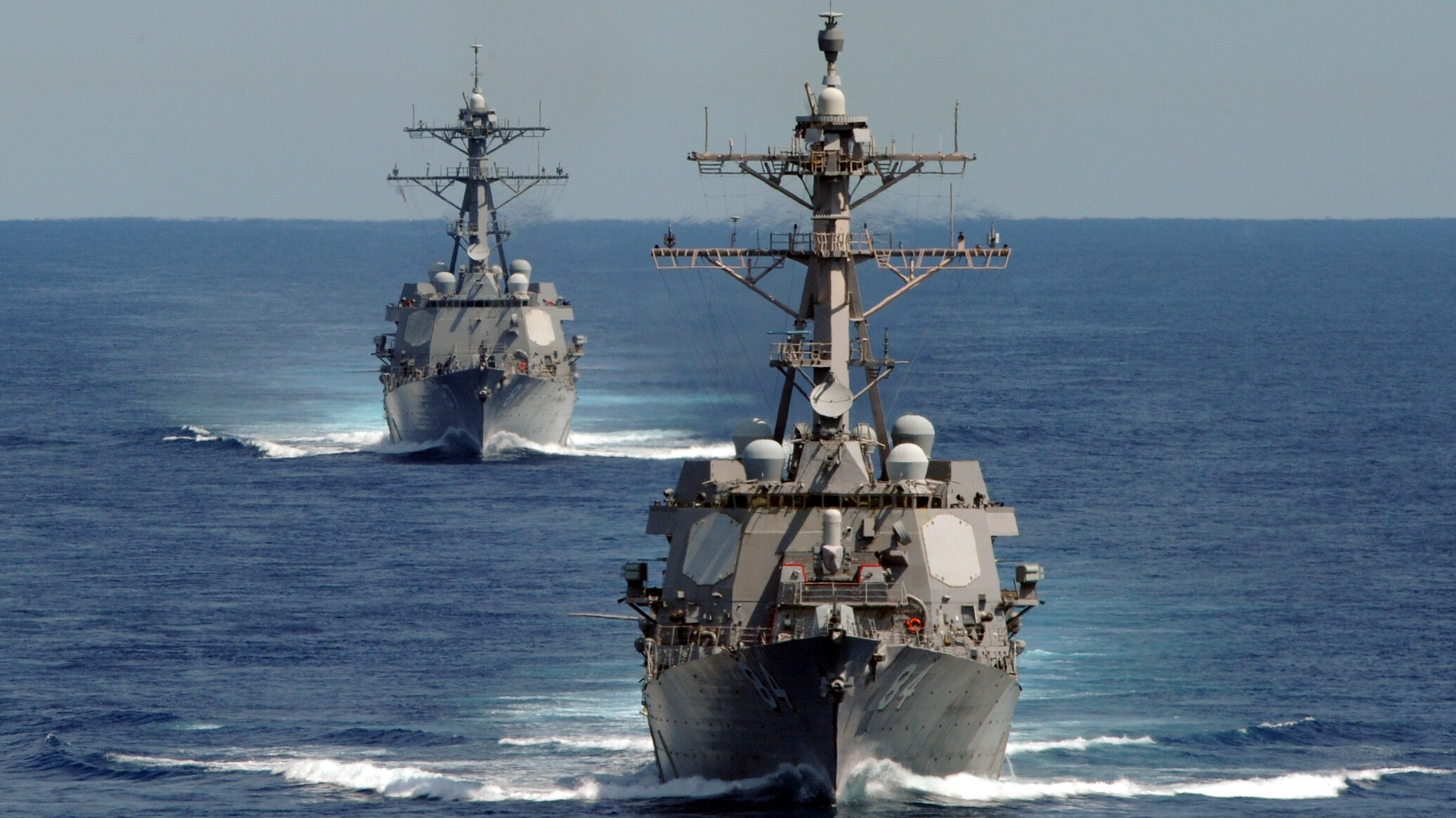
SNA 2024 — One year on from implementing ambitious new goals for ship maintenance, the US Navy’s commander of surface forces says the service is on average generating between 50 and 60 ready ships on a given day, falling short of the 75 ship “north star” set by his predecessor.
“We’re making progress. We’re learning a lot as we go from data analytics and how we’re quantifying our readiness and how we’re measuring it,” Vice Adm. Brendan McLane told reporters on Friday ahead of the annual Surface Navy Association symposium this week. “The really obvious thing that we’ve learned is, it all starts with days of maintenance delay.”
“Days of maintenance delay” refers to how many days a ship stays in port being worked on past the scheduled date for it to sail again. McLane said that while that metric is still too high, there has been significant progress in bringing it down.
“Since 2019, we’ve reduced our days of maintenance delay by 43 and a half percent,” McLane said. “But we’re going to have to keep our eye on this and continue to try harder.”
The SWO boss said days of maintenance delay in 2019 were around 7,000, but in fiscal years 2020, 2021, 2022 and 2023, that number had dropped into the 4,000s.
McLane assumed his new billet as commander of naval surface forces this past December. His job is more commonly referred to as the “SWO boss” because he is effectively the most senior operational surface warfare officer in the Navy. (Rear Adm. Yvette Davids relieved the previous SWO boss, Vice Adm. Roy Kitchener, in August 2023 but was serving in an acting capacity due to issues on Capitol Hill at the time that prevented numerous top military officers, including McLane, from being confirmed and promoted.)
Last year around this time, Kitchener announced that he had set the surface force a goal of maintaining at least 75 mission-capable ships on any given day. Kitchener declined to explain how the service reached the 75-ship figure and also did not answer questions about the status of his ships relative to the new goal.
RELATED: New year, new Navy goal: SWO boss wants 75 ships ready daily
“But just to be clear, we didn’t have a number before,” Kitchener said at the time. “We didn’t have one in the surface community. And so, this is my attempt to say, ‘No, this is what it is.’”
The 75 ships counted do not include carriers, submarines, Military Sealift Command ships and classes that contain just a handful of vessels, such as the Zumwalt-class destroyers and the expeditionary sea bases. McLane, whose previous billet as commander of Naval Surface Force Atlantic had him working closely with Kitchener, conceded there was still work to be done to achieve the 75-ship metric.
“What are the lessons learned?” he said. “It comes down to being able to do the basics very well. Getting your ship out of the [maintenance period] requires dedicated management and involvement day in [and] day out to hold both the contractors and the lead maintenance activity accountable for what they have signed up to do.”
The SWO boss’ remarks come at a time when the surface fleet is both in the spotlight and under strain. Operating as part of two different carrier strike groups, numerous surface ships have been in and around the Mediterranean and Red Seas, conducting missile and drone defense missions to support Israel as well as protecting commercial shipping vessels facing threats from Iran-backed Houthi rebels.
RELATED: In 2024, will the Navy again reassess increasing demands on the surface force?
For the surface force, it has translated into deployments being extended, crews under the stress of frequent drone and missile attacks and the Navy’s ship maintenance infrastructure under pressure to have more ships and crews ready to deploy if — or more likely when — called upon.
Rear Adm. Joseph Cahill, who is now in McLane’s previous job commanding naval surface force Atlantic, said during the same call with reporters the service is pursuing “self-sustainability efforts,” when asked about the recent extended deployments.
“That also includes mid-deployment voyage repairs, and maintenance availabilities at deployed regional maintenance facilities for those things that we can’t accomplish at sea. So, for example, Normandy (CG-60) did a mid-deployment, maintenance, availability in Croatia,” he said.
Answering the same question, McLane added, “Broadly speaking, on the one hand, I’m incredibly proud of our surface force and the agility that we have when our military leadership decides that we need to keep ships on deployment longer than originally planned, and we can flex and do that.”
“At the same time, to be honest, I groan every time it happens because I want to get those ships back [home],” he continued. “We’ve got things that are going to need to get fixed after a seven-to-eight month deployment no matter what ship we’re talking about.”